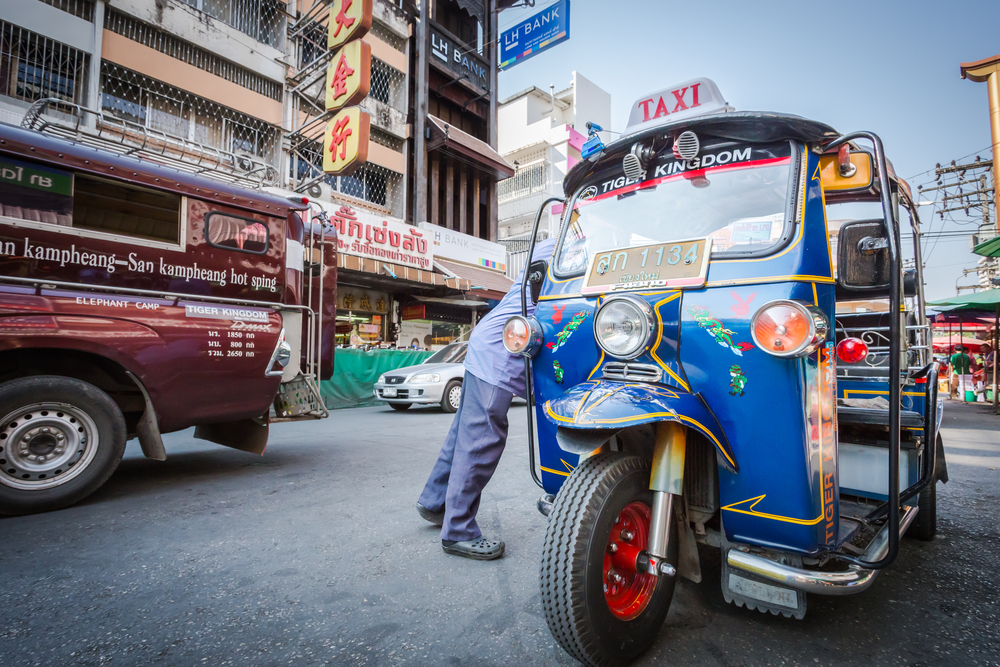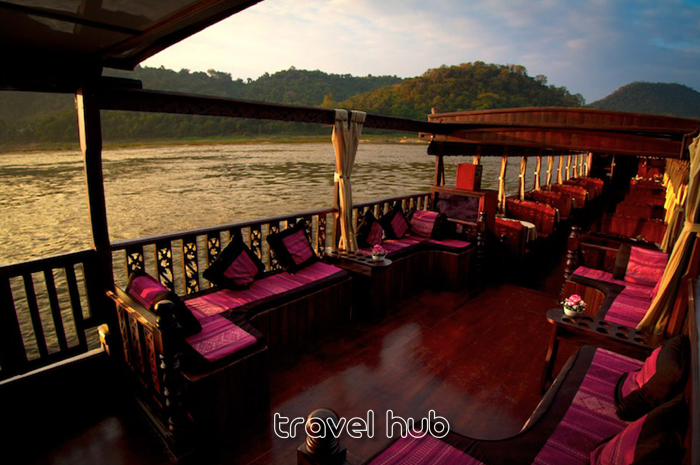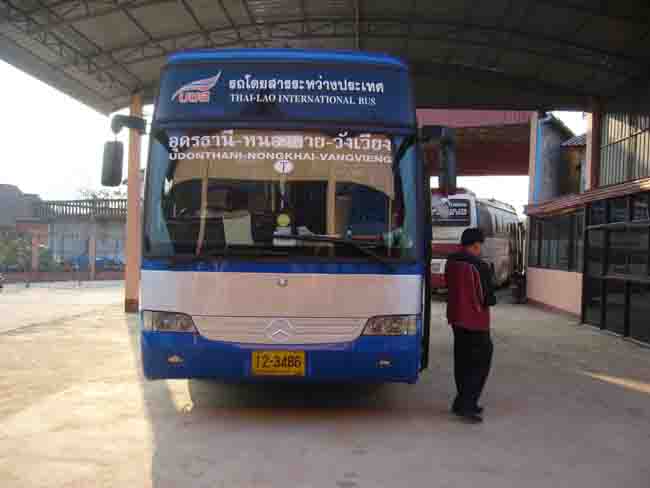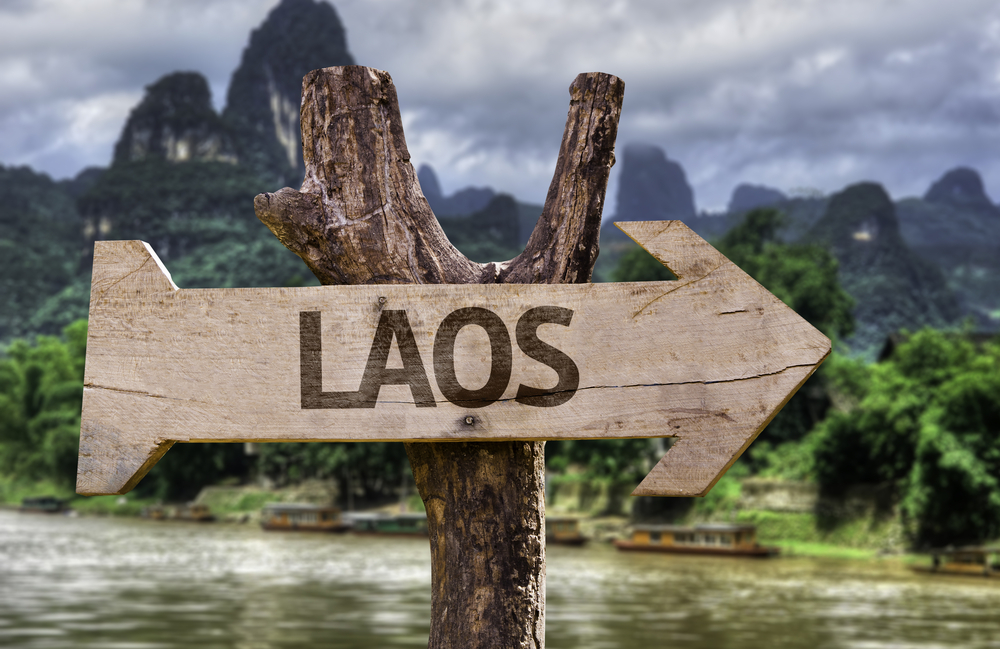Everyone ponders the problem of transport while in Chiang Mai. Chiang Mai can be both a wonderful and a frightful place to travel around, depending on the time of day, whether or not there happens to be a procession somewhere, or often just for reasons which aren’t clear and never will be. I guess how you feel about it depends entirely on your headspace at the time, and also about what method of transport you have chosen.
When you arrive.
For me this choice is the simplest of all. After you arrive at Chiang Mai Airport and collect your baggage you have some choice about how to get to your hotel, or the centre of town to start searching for accommodation. Many people advocate finding an empty Song Tau (literally translated as two seats, these are the most common form of transport around the city and to outlying centres. In the centre of Chiang Mai these are red pick-ups with two long bench seats in the back). For me, though, I have had some less than memorable experiences with Song Tau’s, particularly when I’ve been booked into a smaller hotel or guest house. Adding an hour of stressful searching onto however many hours of plane travel and transiting just doesn’t do it for me anymore! Trust me, play it safe and get a taxi! Song Tau will charge per person whereas almost always a taxi will charge you either a flat rate (prepaid ticketing similar to many airports in Thailand) or metered rate, which is usually far cheaper, although it can be difficult to find a metered taxi at the airport. A final point about this matter? Taxis are air-conditioned!
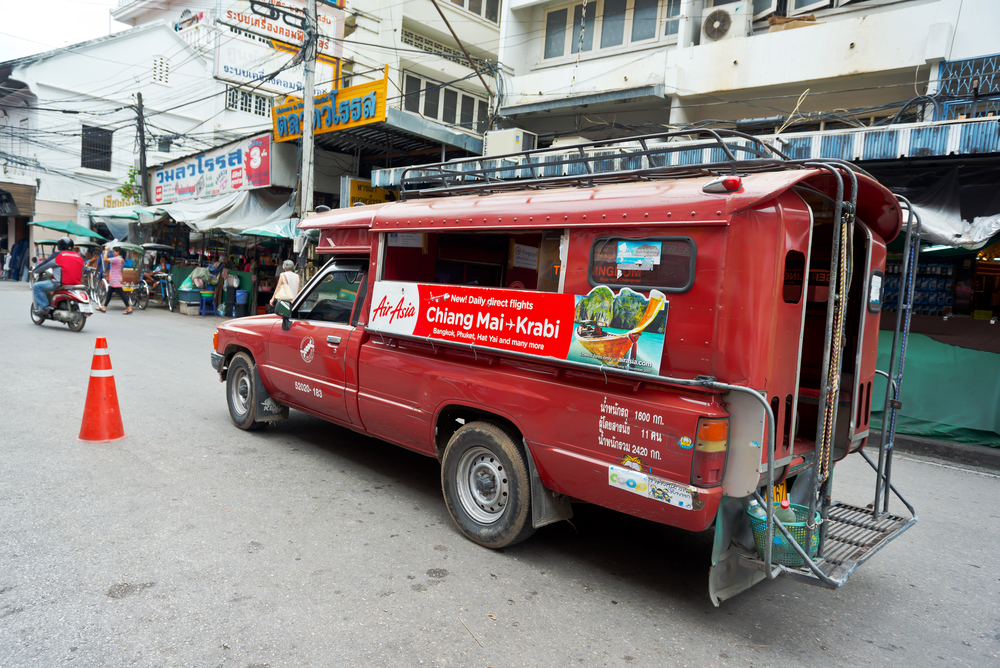
Chiang Mai Airport is only a couple of kilometres to the south west of the centre of Chiang Mai, which is the “old city”. The Old City is a square measuring about 1.5 by 1.5 kilometres and partially enclosed by sections of the wall which fortified the city against attack. It is more easily recognisable by the moat, or canal system which entirely surrounds it.
The square “old city” section is aligned almost perfectly so that there is an extremity for each of the main compass points. On the eastern side you will find arguably the most important tourist features including Tha Pae Gate, which is also the starting point for the Sunday Walking Street, and nearby is the western end of Loi Kroh Road which joins the old city to the night bazaar (about one kilometre east), in doing so traveling through the heart of Chiang Mai’s major night life centre.
Starting from the approximate mid-point of the southern side of the old city is the northern end of the Saturday Walking Street, sometimes referred to as the silver market area due to the number of silversmiths trading here.
Ok, now you’re settled in.
Chiang Mai itself is actually really easy to navigate around. The best landmark is Doi Suthep and the mountain range to the west, so if you can remember always to take your bearings from the mountains you will always be able to at least get close to where you started out in the morning, a handy thing at bed time!
Chiang Mai has many attractions. When I first arrived long term in Chiang Mai I walked everywhere for about the first five days. Let me tell you the novelty soon wore off! Yes, it’s hot! You may also notice that many of the footpaths aren’t necessarily up to the standard you left at home.
Song Tau? Yes, they’re great to a point. Sometimes you may have to ask quite a few drivers if they’re heading your way before you will find one. Always check the price before you enter, it avoids any argument at your destination. Song Tau’s can also make for some wonderful encounters with both locals and other travellers, too. On the downside you will pay perhaps 20 Baht per person per journey, so in a day of committed sightseeing this can add up.
Considered hiring a scooter? Ok, Chiang Mai is probably not the place to learn to ride any sort of two-wheeled vehicle, but if you have some experience, a good head for defensive riding and a little bit of the adventurer in you, scooters are great for two people and can be hired for as little as 150 Baht per day. For that money you can’t argue with the convenience. Logistically I try to avoid leaving my passport as a deposit, and if you are staying near where you hire then it’s usually quite possible to negotiate leaving a copy of your passport, and perhaps a deposit.
Once you’re on the road make sure you always lock the steering and take the key with you! I’ve never had a problem, but have heard plenty of tales of scooters, particularly desirable ones, going missing. And wear a helmet! Police regularly man main intersections en-masse and the fine for not wearing a helmet is currently 500 Baht. The place you hire the bike from should also include a helmet or two for free.
If you’re not on a budget it is really very easy to find a driver with car who will negotiate a daily rate with you and be at your disposal for as long as you want them. As with everything, negotiate hard and be clear about where you do and don’t want to go.
Chiang Mai is a great city in a great country. It is an experiential place, so grab yourself a tourist map, do a little research, and get out and enjoy it!


